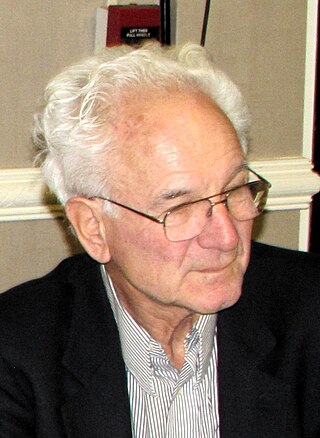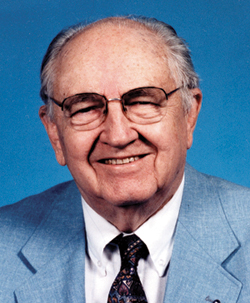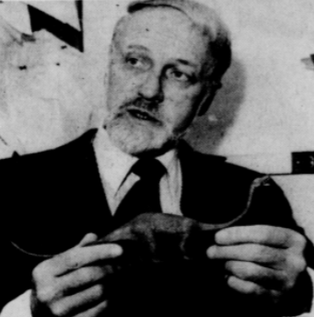Related Research Articles
Cryptozoology is a pseudoscience and subculture that searches for and studies unknown, legendary, or extinct animals whose present existence is disputed or unsubstantiated, particularly those popular in folklore, such as Bigfoot, the Loch Ness Monster, Yeti, the chupacabra, the Jersey Devil, or the Mokele-mbembe. Cryptozoologists refer to these entities as cryptids, a term coined by the subculture. Because it does not follow the scientific method, cryptozoology is considered a pseudoscience by mainstream science: it is neither a branch of zoology nor of folklore studies. It was originally founded in the 1950s by zoologists Bernard Heuvelmans and Ivan T. Sanderson.

The Loch Ness Monster, affectionately known as Nessie, is a creature in Scottish folklore that is said to inhabit Loch Ness in the Scottish Highlands. It is often described as large, long-necked, and with one or more humps protruding from the water. Popular interest and belief in the creature has varied since it was brought to worldwide attention in 1933. Evidence of its existence is anecdotal with a number of disputed photographs and sonar readings.

Peter H. Duesberg is a German-American molecular biologist and a professor of molecular and cell biology at the University of California, Berkeley. He is known for his early research into the genetic aspects of cancer. He is a proponent of AIDS denialism, the claim that HIV does not cause AIDS.

Immanuel Velikovsky was a Russian-American psychoanalyst, writer, and catastrophist. He is the author of several books offering pseudohistorical interpretations of ancient history, including the U.S. bestseller Worlds in Collision published in 1950. Velikovsky's work is frequently cited as a canonical example of pseudoscience and has been used as an example of the demarcation problem.

HIV/AIDS denialism is the belief, despite conclusive evidence to the contrary, that the human immunodeficiency virus (HIV) does not cause acquired immune deficiency syndrome (AIDS). Some of its proponents reject the existence of HIV, while others accept that HIV exists but argue that it is a harmless passenger virus and not the cause of AIDS. Insofar as they acknowledge AIDS as a real disease, they attribute it to some combination of sexual behavior, recreational drugs, malnutrition, poor sanitation, haemophilia, or the effects of the medications used to treat HIV infection (antiretrovirals).

Henry Madison Morris was an American young Earth creationist, Christian apologist and engineer. He was one of the founders of the Creation Research Society and the Institute for Creation Research. He is considered by many to be "the father of modern creation science". He coauthored The Genesis Flood with John C. Whitcomb in 1961.

Worlds in Collision is a book by Immanuel Velikovsky published in 1950. The book postulates that around the 15th century BC, the planet Venus was ejected from Jupiter as a comet or comet-like object and passed near Earth. The object allegedly changed Earth's orbit and axis, causing innumerable catastrophes that are mentioned in early mythologies and religions from around the world. The book has been heavily criticized as a work of pseudoscience and catastrophism, and many of its claims are completely rejected by the established scientific community as they are not supported by any available evidence.

Roy P. Mackal was a University of Chicago biologist best known to the general public for his interest in cryptozoology.

Anomalistics is the use of scientific methods to evaluate anomalies, with the aim of finding a rational explanation. The term itself was coined in 1973 by Drew University anthropologist Roger W. Wescott, who defined it as being the "serious and systematic study of all phenomena that fail to fit the picture of reality provided for us by common sense or by the established sciences."

Charles Leroy Ellenberger is perhaps best known as a one-time advocate, but now a critic of, controversial writer Immanuel Velikovsky and his works on catastrophism. He first read Worlds in Collision in 1969. In 1979, he became a contributing editor to the Velikovsky-inspired Kronos journal, and has contributed material to many other publications. In 1980 he was selected by the editor of Astronomy magazine to debate James Oberg on Velikovsky.

Pensée: Immanuel Velikovsky Reconsidered ("IVR") was a special series of ten issues of the magazine Pensée advancing the pseudoscientific theories of Immanuel Velikovsky. It was produced to "encourage continuing critical analysis of all questions raised by Velikovsky's work", published between May 1972 and Winter 1974-75 by the Student Academic Freedom Forum, whose president was David N. Talbott, with the assistance and cooperation of Lewis and Clark College, Portland, Oregon. Velikovsky -- "the man whose work was being examined 'objectively'" insinuated himself into the editing of the May 1972 issue, just as he had done earlier for the April 1967 "Velikovsky" issue of Yale Scientific Magazine.

The Society for Scientific Exploration (SSE) is a group committed to studying fringe science. The opinions of the organization in regard to what are the proper limits of scientific exploration are often at odds with those of mainstream science. Critics argue that the SSE is devoted to disreputable ideas far outside the scientific mainstream.

The Other Side of AIDS is a 2004 pseudoscience film by Robin Scovill. Through interviews with prominent AIDS denialists and HIV-positive people who have refused anti-HIV medication, the film makes the claim that HIV is not the cause of AIDS and that HIV treatments are harmful, conclusions which are rejected by medical and scientific consensus. The film was reviewed in Variety and The Hollywood Reporter in 2004, and received additional attention in 2005, when Scovill's three-year-old daughter died of untreated AIDS.
The Perth Group is a group of HIV/AIDS denialists based in Perth, Western Australia who claim, in opposition to the scientific consensus, that the existence of HIV is not proven, and that AIDS and all the "HIV" phenomena are caused by changes in cellular redox due to the oxidative nature of substances and exposures common to all the AIDS risk groups, and are caused by the cell conditions used in the "culture" and "isolation" of "HIV".
Seth C. Kalichman is an American clinical community psychologist and professor of social psychology at the University of Connecticut, known for his research into HIV/AIDS treatment and HIV/AIDS denialism. Kalichman is also the director of the Southeast HIV/AIDS Research & Education Project in Atlanta, Georgia, and Cape Town, South Africa, and the editor of the journal AIDS and Behavior. He is the developer of the Sexual Compulsivity Scale.
Robert J. (Bob) Schadewald was an author, researcher, and former president of the National Center for Science Education (NCSE). An internationally recognized expert on pseudoscience, Schadewald penned numerous articles on creationism, perpetual motion, flat earthism, and other pseudoscience for such magazines as Science 80, Technology Illustrated, Smithsonian, and Science Digest.
Charles J. Cazeau (1931-1999) was an American geologist and writer.
Michael Dan Gordin is an American science historian and Slavist.
References
- 1 2 3 "henryhbauer". henryhbauer.homestead.com. Retrieved 2016-05-26.
- 1 2 3 "Biomedical Seminars: "Truth Stranger Than Fiction: HIV is Not The Cause of AIDS"". Virginia College of Osteopathic Medicine. 2007-09-12. Archived from the original on December 13, 2007. Retrieved 2008-06-03.
- 1 2 Kalichman, Seth C. (2009). Denying AIDS: Conspiracy Theories, Pseudoscience, and Human Tragedy. Berlin: Springer. pp. 22, 59, 64–66, 70–75, 103, 141–143, 182–183, 200. ISBN 978-0-387-79475-4.
- ↑ "PROFESSORS" (PDF). www.shsobu.org.au. Archived from the original (PDF) on 2019-03-23. Retrieved 2016-05-25.
- ↑ Goldman, Bonnie (June 2009). "This Month in HIV: The Truth About HIV/AIDS Denialism" (PDF). Thebody.com . Archived from the original (PDF) on 19 October 2013. Retrieved 18 March 2014.
- ↑ Goodstein, David L. 1992. Rangings of the Mind, Science May 15, 256, p. 1034.
- ↑ Galloway, John W. 1992. Madness to the method, Nature 6 August, 358, p. 464.
- ↑ Ziman, John. 1993. Public Understand. Sci.2, pp. 179-180.
- ↑ The Roanoke Times (report that Bauer addressed a Virginia conference of the Mutual UFO Network): "UFO buffs sighted at lake awhile, then vanish: One in seven people claims to have seen one, but the meeting didn't draw much interest", Jay Conley, Roanoke Times, 28 September 2008. Accessed 28 September 2008.
- 1 2 3 4 Angleberger, Tom (30 October 2000). "Days spent on banks of Loch Ness not a waste; Keeping watch for Nessie who ain't necessarily so". The Roanoke Times.
- ↑ Ron Westrum (March 1988). "Reviewed work(s): The Enigma of Loch Ness: Making Sense of a Mystery by Henry H. Bauer". Isis . The University of Chicago Press on behalf of The History of Science Society. 79 (1): 145–146. doi:10.1086/354664. JSTOR 234471.
- ↑ "Genuine facts about "Nessie", the Loch Ness "monster"". 2007-09-07. Retrieved 2008-06-03.
- 1 2 Michael D. Lemonick/Gainesville (2005-05-24). "Science on the Fringe". Time magazine. Archived from the original on May 25, 2005. Retrieved 2008-06-02.
- ↑ John W. Patterson (1985-06-14). "Lessons of a Controversy: Beyond Velikovsky". Science . American Association for the Advancement of Science (AAAS). 228 (4705): 1304–1305. doi:10.1126/science.228.4705.1304-a. PMID 17799114.
- ↑ Gingerich, Owen (1985). On trans-scientific turf. Nature 25 April; 314:692-3
- ↑ Smith, Robert W. 1985. ISIS76 (3), pp. 428-429.
- ↑ Goldsmith, Donald W. 1987. Velikovsky and After. Journal for the History of Astronomy18, pp. 72-74.
- 1 2 3 Zack, Ian (16 August 1998). "Rush Limbaugh has nothing on him: Professor's opinions - and he has many - have put him at odds with his bosses at Tech". The Roanoke Times . Associated Press.
- ↑ "Back copies of the Virginia Scholar". American Association of University Professors (AAUP). Archived from the original on 2008-07-08. Retrieved 2008-06-05.
- ↑ Zack, Ian (1995-09-08). "Virginia Tech police start unit for 'sensitive' crimes". Washington Times . Associated Press.
- ↑ Zack, Ian (1999-04-08). "Study shows Va. Tech as ivory tower more than ever: Despite recruiting, fewer blacks enroll". The Roanoke Times . Associated Press.
- 1 2 "AIDSTruth member criticizes AIDS denialists" (PDF). Archived from the original (PDF) on 24 June 2007. Retrieved 16 June 2008.
- ↑ (Pseudonym) Martin, Josef (1988). To Rise Above Principle: The Memoirs of an Unreconstructed Dean. University of Illinois Press. ISBN 9780252015076.
- ↑ "I 've been wrong". henryhbauer.homestead.com. Retrieved 2016-05-26.
- ↑ See "Questioning HIV/AIDS: Morally Reprehensible or Scientifically Warranted?" on the list of papers
- ↑ Bauer, HH (2007). The Origin, Persistence and Failings of HIV/AIDS Theory. McFarland. ISBN 978-0-7864-3048-2.
- ↑ "The evidence that HIV causes AIDS." National Institute of Allergy and Infectious Diseases, 2003.
- ↑ "The HIV-AIDS Connection", National Institute of Allergy and Infectious Diseases, 2003. "Why is there overwhelming scientific consensus that HIV causes AIDS?"
- ↑ ED295548 - To Rise above Principle: The Memoirs of an Unreconstructed Dean. Education Resources Information Center ERIC. 1987-11-30. ISBN 9780252015076 . Retrieved 2008-06-03.